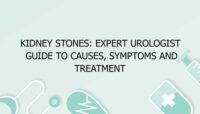A lipid profile test, often referred to as a lipid panel, is a comprehensive blood test used to evaluate an individual’s lipid levels and assess their risk of cardiovascular disease. The test measures various types of fats in the blood, including cholesterol and triglycerides, which are essential indicators of heart health and overall metabolic status. By providing detailed information about these lipid levels, the test helps healthcare providers diagnose and manage conditions related to lipid metabolism and cardiovascular health.
Purpose of the Lipid Profile Test
The primary purpose of a lipid profile test is to evaluate the levels of different lipids in the blood, which are crucial for understanding cardiovascular risk and overall health. Here’s an overview of the main purposes:
- Assessing Cardiovascular Risk: One of the most common uses of the lipid profile test is to assess the risk of cardiovascular diseases, including coronary artery disease, heart attack, and stroke. Elevated levels of total cholesterol, low-density lipoprotein (LDL) cholesterol, and triglycerides are associated with an increased risk of these conditions, while high levels of high-density lipoprotein (HDL) cholesterol are protective.
- Monitoring Treatment Effectiveness: For individuals already on medication or lifestyle changes aimed at managing cholesterol levels, such as statins or dietary modifications, the lipid profile test is used to monitor the effectiveness of these interventions. Regular testing helps ensure that lipid levels are reaching target ranges and allows for adjustments in treatment if necessary.
- Diagnosing Dyslipidemia: The lipid profile test helps diagnose dyslipidemia, a condition characterized by abnormal lipid levels in the blood. This includes conditions such as hypercholesterolemia (high cholesterol) and hypertriglyceridemia (high triglycerides), which may require specific management strategies.
- Evaluating Metabolic Syndrome: Metabolic syndrome is a cluster of conditions, including obesity, high blood pressure, high blood sugar, and abnormal lipid levels, that increase the risk of heart disease and diabetes. A lipid profile can provide important information about lipid abnormalities associated with metabolic syndrome.
- Guiding Preventive Health Strategies: By identifying elevated lipid levels early, the lipid profile test helps guide preventive health strategies to reduce the risk of developing cardiovascular diseases. This may involve lifestyle changes, such as improved diet, increased physical activity, and, if necessary, medications to lower cholesterol levels.
- Assessing Overall Health Risk: Elevated lipid levels can be indicative of other underlying health issues, such as thyroid dysfunction or liver disease. The lipid profile test, therefore, contributes to a broader assessment of an individual’s health status.
Understanding Lipid Profile Results
A lipid profile typically includes the following components:
- Total Cholesterol (TC): Total cholesterol measures the overall level of cholesterol in the blood, including both LDL and HDL cholesterol. High total cholesterol levels are associated with an increased risk of heart disease.
- Low-Density Lipoprotein Cholesterol (LDL-C): Often referred to as “bad” cholesterol, LDL cholesterol carries cholesterol to the cells. High levels of LDL cholesterol can lead to plaque buildup in the arteries, increasing the risk of atherosclerosis and cardiovascular events.
- High-Density Lipoprotein Cholesterol (HDL-C): Known as “good” cholesterol, HDL cholesterol helps remove excess cholesterol from the bloodstream and transport it to the liver for excretion. Higher levels of HDL cholesterol are associated with a lower risk of heart disease.
- Triglycerides (TG): Triglycerides are a type of fat found in the blood. Elevated triglyceride levels can be a risk factor for heart disease and may indicate other health issues such as obesity, diabetes, or metabolic syndrome.
- Very Low-Density Lipoprotein Cholesterol (VLDL-C): Although not always measured directly, VLDL cholesterol is another type of “bad” cholesterol that contributes to the buildup of plaque in the arteries. It is calculated based on triglyceride levels.
Normal Ranges of Lipid Profile Components
The table below summarizes typical reference ranges for lipid profile components. It is important to note that target ranges may vary based on individual health conditions, risk factors, and guidelines from health organizations.
| Lipid Profile Component | Normal Range | Description |
|---|---|---|
| Total Cholesterol (TC) | < 200 mg/dL | Total cholesterol level; lower levels are generally preferred for reducing cardiovascular risk. |
| Low-Density Lipoprotein Cholesterol (LDL-C) | < 100 mg/dL | LDL cholesterol level; lower levels are associated with reduced risk of heart disease. |
| High-Density Lipoprotein Cholesterol (HDL-C) | > 60 mg/dL | HDL cholesterol level; higher levels are protective against heart disease. |
| Triglycerides (TG) | < 150 mg/dL | Triglyceride level; lower levels are preferable for heart health. |
| Very Low-Density Lipoprotein Cholesterol (VLDL-C) | Not typically measured directly; calculated from triglyceride levels | VLDL cholesterol level; contributes to the overall risk of heart disease. |
These reference ranges provide general guidelines for evaluating lipid levels. Individual target levels may vary based on specific health conditions and risk factors.
Frequently Asked Questions (FAQs) about Lipid Profile Testing
What is a lipid profile test and what does it measure?
A lipid profile test is a blood test used to measure the levels of different types of lipids, or fats, in the blood. This test typically includes measurements of total cholesterol, low-density lipoprotein (LDL) cholesterol, high-density lipoprotein (HDL) cholesterol, and triglycerides. By assessing these lipid levels, the test helps evaluate an individual’s risk for cardiovascular diseases, such as heart disease and stroke. Total cholesterol provides an overall measure of cholesterol in the blood, while LDL cholesterol, often referred to as “bad” cholesterol, can contribute to plaque buildup in the arteries. HDL cholesterol, known as “good” cholesterol, helps remove excess cholesterol from the bloodstream, and triglycerides are another type of fat that can impact heart health. The lipid profile test is a crucial tool for diagnosing dyslipidemia, monitoring treatment effectiveness, and guiding preventive health strategies.
Why is it important to monitor cholesterol and triglyceride levels?
Monitoring cholesterol and triglyceride levels is important because abnormal levels are associated with an increased risk of cardiovascular diseases. High levels of low-density lipoprotein (LDL) cholesterol, often termed “bad” cholesterol, can lead to the buildup of plaque in the arteries, resulting in atherosclerosis, heart attacks, and strokes. Conversely, high levels of high-density lipoprotein (HDL) cholesterol, or “good” cholesterol, are associated with a lower risk of heart disease, as HDL helps remove excess cholesterol from the bloodstream. Elevated triglyceride levels can also contribute to heart disease and may indicate other health issues such as obesity, diabetes, or metabolic syndrome. Regular monitoring of these lipid levels helps assess cardiovascular risk, guide treatment decisions, and implement preventive measures to improve heart health.
How often should I get a lipid profile test?
The frequency of lipid profile testing depends on individual health conditions, risk factors, and treatment goals. For adults with no known heart disease or risk factors, a lipid profile is generally recommended every 4 to 6 years as part of routine health check-ups. However, individuals with risk factors for cardiovascular disease, such as high blood pressure, diabetes, or a family history of heart disease, may require more frequent testing. For those on cholesterol-lowering medications or undergoing treatment for dyslipidemia, regular testing is necessary to monitor treatment effectiveness and make necessary adjustments. Your healthcare provider will determine the appropriate testing frequency based on your specific health profile and risk factors.
What factors can affect the results of a lipid profile test?
Several factors can affect the results of a lipid profile test. Dietary habits, particularly high intake of saturated fats and cholesterol, can influence cholesterol levels. Physical inactivity and obesity can also contribute to elevated LDL cholesterol and triglycerides. Additionally, certain medications, such as corticosteroids, beta-blockers, and oral contraceptives, can impact lipid levels. Hormonal changes, such as those associated with pregnancy or thyroid disorders, may also affect test results. Acute illnesses, stress, and recent alcohol consumption can temporarily alter lipid levels. To ensure accurate results, it is important to follow any pre-test instructions provided by your healthcare provider, such as fasting for a specific period before the test.
What do high and low levels of cholesterol and triglycerides mean?
High levels of low-density lipoprotein (LDL) cholesterol and triglycerides are associated with an increased risk of cardiovascular diseases. Elevated LDL cholesterol can lead to the formation of plaque in the arteries, increasing the risk of heart attack and stroke. High triglyceride levels may indicate other health issues, such as obesity, diabetes, or metabolic syndrome, and can contribute to cardiovascular risk. Conversely, low levels of high-density lipoprotein (HDL) cholesterol are associated with a higher risk of heart disease, as HDL helps remove excess cholesterol from the bloodstream. Low total cholesterol levels, if significantly below the normal range, may also be a concern and could indicate underlying health issues. Interpreting these results in the context of overall health and risk factors helps guide appropriate treatment and lifestyle modifications.
Can lifestyle changes impact my lipid profile results?
Yes, lifestyle changes can have a significant impact on lipid profile results. Adopting a heart-healthy diet, such as one low in saturated fats, trans fats, and cholesterol, can help lower levels of low-density lipoprotein (LDL) cholesterol and triglycerides. Incorporating more fruits, vegetables, whole grains, and healthy fats (such as those found in nuts and fish) can improve lipid levels. Regular physical activity
, including both aerobic exercise and strength training, can also help lower LDL cholesterol and triglycerides while increasing high-density lipoprotein (HDL) cholesterol. Additionally, weight loss can positively affect lipid levels, especially for individuals who are overweight or obese. Smoking cessation and moderating alcohol intake further contribute to improved lipid profiles and overall cardiovascular health.
What should I do if my lipid profile results are abnormal?
If your lipid profile results are abnormal, it is important to follow up with your healthcare provider to discuss the implications and develop a management plan. Depending on the specific abnormalities, your provider may recommend lifestyle changes, such as dietary modifications, increased physical activity, and weight management, to improve your lipid levels. In some cases, medications may be prescribed to help lower low-density lipoprotein (LDL) cholesterol or triglycerides. Your provider will work with you to set realistic goals for improving your lipid profile and reducing cardiovascular risk. It is also important to address any underlying conditions, such as diabetes or hypertension, which can impact lipid levels. Regular follow-up appointments and monitoring will help assess the effectiveness of interventions and make necessary adjustments to your treatment plan.
How can I prepare for a lipid profile test?
Preparation for a lipid profile test typically involves fasting for at least 9 to 12 hours before the test. Fasting helps ensure accurate measurement of lipid levels, particularly triglycerides, as food intake can temporarily elevate triglyceride levels. During the fasting period, you should only consume water and avoid any other foods or beverages. It is important to follow any specific instructions provided by your healthcare provider regarding fasting and pre-test preparation. Additionally, inform your provider of any medications, supplements, or health conditions that may affect the test results. If you have any questions or concerns about the preparation process, your healthcare provider can provide guidance to ensure accurate and reliable test results.
Are there any risks associated with a lipid profile test?
A lipid profile test is a routine and minimally invasive blood test with very low risk. The primary risk associated with the test is related to the blood draw process, which may cause temporary discomfort, bruising, or bleeding at the needle insertion site. These risks are generally minor and resolve quickly. There are no significant risks associated with the lipid profile test itself, but it is important to ensure that any pre-test instructions, such as fasting, are followed to obtain accurate results. If you have any concerns about the blood draw process or the test, discussing them with your healthcare provider can help alleviate any apprehensions and ensure a smooth testing experience.
How are lipid profile results used to assess cardiovascular risk?
Lipid profile results are used to assess cardiovascular risk by evaluating the levels of different lipids in the blood, including total cholesterol, low-density lipoprotein (LDL) cholesterol, high-density lipoprotein (HDL) cholesterol, and triglycerides. High levels of LDL cholesterol and triglycerides are associated with an increased risk of developing cardiovascular diseases, such as heart disease and stroke, due to their role in plaque formation and arterial blockage. Conversely, high levels of HDL cholesterol are considered protective against cardiovascular disease, as HDL helps remove excess cholesterol from the bloodstream. By analyzing these lipid levels and considering other risk factors, such as age, family history, and overall health, healthcare providers can determine an individual’s risk of cardiovascular events and develop personalized prevention and treatment strategies to manage and reduce that risk effectively.


